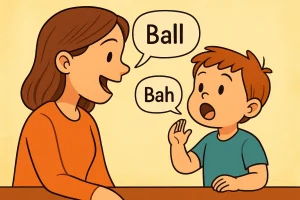Simple Time Management Tricks for Kids to Stay Focused
Last Updated: September 14, 2024
Time management might seem like something only adults need to worry about, but it’s just as important for kids. Imagine a world where your child can complete homework on time, have fun playing their favorite games, and still get a good night’s sleep. Sounds great, right? That’s the power of effective time management!
For kids, learning to manage time is more than just about getting tasks done—it’s about reducing stress, building confidence, and having more time for fun activities they love. When kids know how to manage their time well, they’re less likely to feel overwhelmed and more likely to stay focused on what they need to do. Whether it’s finishing school projects, getting ready in the morning, or simply sticking to a bedtime routine, good time management helps kids feel more in control of their day.
Also read: Online Behavioral Therapy for Kids
Understanding Time Management
Time management might sound like a big, grown-up concept, but it’s actually pretty simple—and kids can master it too! At its core, time management means using your time wisely to get things done, so you have more space for fun and relaxation. It’s all about finding a balance between responsibilities, like homework or chores, and enjoyable activities, like playing with friends or watching your favorite show.
Why is time management so important for kids? Well, when kids learn to manage their time, they can stay focused on their tasks without feeling overwhelmed. Imagine not having to rush through homework at the last minute or getting ready for school without the morning chaos. Good time management helps kids feel organized and in control, making every day run more smoothly. Plus, it reduces stress—not just for kids, but for parents too!
Start with a Daily Routine
One of the easiest ways to help kids get better at managing their time is by establishing a daily routine. Routines provide structure and predictability, making it easier for kids to know what’s coming next. This predictability helps them stay focused and can even make transitions between activities smoother.
- Morning Routine: Starting the day with a consistent morning routine sets a positive tone for the entire day. Simple steps like waking up at the same time, brushing teeth, having breakfast, and getting dressed in a set order can make mornings less stressful and more efficient.
- After-School Routine: After school, routines help kids switch gears from classroom mode to home mode. This might include a snack, some downtime, followed by homework. It’s also a good idea to include some playtime or relaxation before dinner, so kids can unwind.
- Bedtime Routine: A calming bedtime routine is key for a good night’s sleep, which is essential for focus and energy the next day. This could involve activities like reading a book, brushing teeth, and setting out clothes for the next day. Sticking to a set bedtime helps ensure that kids get enough rest.
- Tips for Involving Kids in Their Routines: To make routines more effective, involve your kids in the planning process. Ask them what activities they feel are important and what order they prefer to do things. This not only makes them feel in control but also increases their commitment to sticking with the routine. You can even make it fun by creating a colorful chart together or using stickers to track their progress.
Also read: Understanding Behavioral Therapy: A Simple Guide for Parents
Set Clear Goals
Setting clear, achievable goals is a fantastic way for kids to learn time management skills. When kids have specific goals, they know exactly what they’re working towards, which helps them stay focused and motivated. But it’s important to keep these goals small and manageable—nothing too overwhelming! For instance, a short-term goal could be something as simple as finishing homework before dinner or keeping their room tidy for a week. These small wins boost confidence and make bigger tasks seem more approachable.
Long-term goals, like improving grades in a subject or learning to play a new instrument, teach kids perseverance and the value of working towards something over time. It’s important that these goals are broken down into smaller steps. For example, if the goal is to get better at math, start with daily practice on a specific topic or setting aside 10 minutes each day for math exercises.
Tips for Parents: Parents can play a key role in helping their kids set and track goals. Start by having a casual chat about what they’d like to achieve—keep it light and fun! Help them write down their goals and discuss the steps needed to get there. You can use a simple checklist or a progress chart that they can update regularly. Celebrate their successes, no matter how small, to keep them motivated. If you notice they’re struggling with a goal, offer support and adjust the plan together—teaching them that it’s okay to change paths when things don’t go as planned.
Use a Visual Schedule or Planner
Visual aids like schedules and planners can be game-changers when it comes to teaching kids time management. Kids are often visual learners, and seeing their tasks laid out in a clear and colorful way can make a huge difference. Visual schedules can range from simple daily charts to detailed weekly planners, depending on your child’s needs. They provide a clear roadmap for the day, helping kids see what’s coming up next and stay on track.
For younger kids, a visual schedule with pictures or icons can make understanding time and tasks more accessible. For instance, a morning schedule might include images of a toothbrush, a bowl of cereal, and a backpack to represent getting ready for school. As kids get older, you can introduce more detailed planners where they can jot down homework assignments, after-school activities, or personal goals.
Making It Fun: To keep kids engaged, make the process fun by involving them in creating their schedule. Use colorful markers, stickers, or even digital planners that allow them to customize the layout. This not only makes the planner visually appealing but also gives them a sense of ownership over their time. You can find great printable templates or planner tools online, including resources like those on Wellness Hub that cater to organizing daily tasks in a child-friendly manner.
Break Tasks into Smaller Steps
Big tasks can often feel overwhelming for kids, making it hard for them to even start. That’s where breaking tasks into smaller, manageable steps comes in handy. By focusing on one step at a time, kids can tackle big projects without feeling stressed or lost. This approach not only makes tasks more approachable but also helps kids build confidence as they complete each step along the way.
For example, instead of telling your child to “finish your homework,” help them break it down into specific actions: “Start with the first math problem,” “Read one page of the science book,” or “Write the first two sentences of the essay.” By dividing tasks into bite-sized pieces, kids can focus on one part at a time, making the overall task feel much less daunting.
Celebrate Small Wins: Every completed step is a victory, and it’s important to celebrate these small wins! Whether it’s a high-five, a sticker on a progress chart, or a few minutes of free time, recognizing these achievements can keep kids motivated. Celebrating progress, no matter how small, encourages kids to keep going, reinforcing the idea that they can achieve their goals one step at a time.
Limit Distractions
In today’s world, distractions are everywhere—TV, video games, smartphones, you name it. While these can be fun, they can also make it really hard for kids to stay focused on what they need to do. Limiting distractions is key to helping kids manage their time effectively.
- Common Distractions: Kids can easily lose track of time when they’re glued to screens or surrounded by toys. Even background noise like a TV playing in another room can pull their attention away from the task at hand. Identifying these common distractions is the first step in creating a more focused environment.
- Creating a Distraction-Free Study Space: Set up a dedicated, quiet space for your child to do their work. This doesn’t have to be a fancy desk—it could be the kitchen table or a cozy corner of the living room. The important thing is that it’s free from distractions like TVs or loud music. Make sure all the necessary supplies—like pencils, erasers, and notebooks—are within easy reach, so they don’t have to get up and lose focus.
Prioritize Tasks
One of the best time management skills kids can learn is how to prioritize tasks. Not all tasks are created equal—some need immediate attention, while others can wait. Teaching kids how to identify what’s most important helps them manage their time more effectively and reduces the stress of feeling overwhelmed.
1. How to Prioritize:
Start by showing kids how to list their tasks for the day. This could be homework, chores, or any other responsibilities. Once they have their list, help them categorize tasks based on importance and deadlines. A simple method is to ask: “Which task is the most important to finish first?” or “What’s due the soonest?” This approach teaches them to tackle high-priority tasks before moving on to less urgent ones.
2. Most Important Task First:
Introduce the concept of the “Most Important Task” (MIT) method. The idea is simple—start the day by focusing on the task that will have the biggest impact. By knocking out the most crucial task early, kids can feel a sense of accomplishment and relief, making the rest of the day’s tasks seem easier to handle. For example, if they have a big project due at the end of the week, working on it a little each day before moving on to other smaller tasks can prevent last-minute panic.
3. Benefits of Prioritizing:
Prioritizing tasks helps kids stay focused and organized. It teaches them to be mindful of deadlines and to make better use of their time. This skill is not just useful for schoolwork but for life in general, as it encourages a habit of proactive planning rather than reactive scrambling.
Daily Task Prioritization
| Task | Importance Level | Deadline | Notes |
|---|---|---|---|
| Math Homework | High | Tomorrow | This is due soon and is important for class. Start this task first to ensure it’s completed on time. |
| Science Project | Medium | End of Week | A larger task that can be broken into smaller steps. Work on this a little each day to avoid last-minute stress. |
| Reading Assignment | High | Tomorrow | Critical for the reading test. Complete along with math homework. |
| Art Assignment | Medium | In 3 Days | Not as urgent but needs attention. Can be done in steps over the next few days. |
| Practice Piano | Medium | No specific deadline, but needs daily practice | Incorporate into daily routine to gradually improve skills. |
| Clean Room | Low | No Deadline | Important but not urgent. Can be done after higher-priority tasks or on a less busy day. |
| Birthday Card for Friend | Medium | This Weekend | Needs to be completed soon, but can wait until after critical academic tasks are done. |
| Watch TV / Play Games | Low | No Deadline | Leisure activities that can be enjoyed once all important tasks are completed. |
Use Timers and Alarms
Timers and alarms can turn time management into a fun and interactive activity for kids. They’re like little reminders that help kids stay on track, manage their time, and even turn tasks into games.
1. Using Timers:
Timers are a great tool for managing study sessions, chores, or any activity that requires focus. For younger kids, using a colorful kitchen timer or a fun digital timer app can make the concept more engaging. For example, set a timer for 15 minutes and challenge them to see how much of their homework they can complete in that time. This method, known as the Pomodoro Technique, breaks work into short, focused bursts followed by a quick break. It keeps kids energized and focused, making long tasks feel more manageable.
2. Setting Realistic Time Limits:
It’s important to set realistic time limits to avoid burnout. If a task is too lengthy, kids might lose interest or feel overwhelmed. Instead, suggest breaking the task into chunks and setting a timer for each segment. For instance, if your child needs to read for 30 minutes, try two 15-minute sessions with a 5-minute break in between. This approach helps maintain their attention and makes the task feel less daunting.
3. Alarms for Routine Reminders:
Alarms can also be helpful for reminding kids of specific routines, like starting homework, getting ready for bed, or preparing for school in the morning. These gentle nudges keep the day running smoothly and ensure that important tasks aren’t forgotten.
Encourage Breaks and Rest
While it’s important for kids to stay on task, it’s equally crucial for them to take breaks and rest. Short breaks are like mini recharges for the brain—they help kids maintain their focus and keep their energy levels up. Imagine trying to run a race without ever slowing down; eventually, you’d get tired and your performance would dip. The same goes for kids when they’re studying or doing chores.
1. The Importance of Breaks:
Taking short breaks between tasks allows kids to reset and return to their work feeling refreshed. It’s during these breaks that the brain processes information, making it easier to retain what they’ve learned. A good rule of thumb is to take a 5-10 minute break after every 20-30 minutes of focused activity. This not only improves concentration but also keeps kids motivated as they move from one task to the next.
2. Physical Activity and Relaxation:
Encourage kids to use their breaks wisely by engaging in a quick physical activity, like stretching, jumping jacks, or even a brief walk. Physical movement boosts blood flow and energy levels, making it easier for them to refocus when it’s time to get back to work. Alternatively, relaxing activities such as deep breathing, drawing, or listening to music can also be beneficial. The key is to find what works best for your child—whether it’s something active or calming.
3. Using Breaks Wisely:
To help kids make the most of their breaks, guide them to set a timer so they know when it’s time to return to their task. This helps maintain a balance between work and rest without letting the break stretch on too long. Remind them that breaks are not just for fun—they’re an important part of staying productive and focused throughout the day.
Practice Consistency and Patience
Developing good time management skills is a journey, not a race. It’s important to remind kids that learning how to manage their time effectively will take practice and patience. Just like any other skill, it won’t happen overnight, and that’s perfectly okay. There will be days when things don’t go as planned, and that’s an opportunity to learn and improve.
1. Encouraging Patience:
Teach kids that it’s normal to make mistakes along the way. Maybe they’ll miss a deadline or get distracted during study time—it happens to everyone. The key is to be patient and keep trying. Encourage them to reflect on what didn’t work and brainstorm ways to do better next time. This mindset not only helps them build resilience but also fosters a positive attitude towards challenges.
2. Parental Support:
Parents play a crucial role in this learning process. Rather than pressuring kids to get it right all the time, offer support and encouragement. Celebrate their progress, no matter how small, and remind them that every effort counts. For example, if your child successfully follows their routine for the day, acknowledge it with praise or a small reward. This positive reinforcement helps kids feel proud of their efforts and motivated to keep going.
Conclusion
Mastering time management is key for school success and creating leisure time for your child. By adopting simple strategies like setting clear goals, utilizing planners, breaking tasks into manageable steps, and taking scheduled breaks, your child can enhance focus and organization. Time management transcends mere task completion—it enriches life by reducing stress and balancing work and play. Every child is unique, so tailor these tips for optimal results. Encourage perseverance and provide supportive guidance. For additional resources and expert advice, visit Wellness Hub. With your support, your child can develop enduring time management skills that pave the way for lifelong success.
Frequently Asked Questions:
1. What are some simple time management tips for kids?
Some simple time management tips for kids include creating a daily routine, setting clear goals, using visual planners or schedules, breaking tasks into smaller steps, and taking regular breaks to recharge.
2. How can I help my child improve their time management skills?
You can help your child improve their time management skills by teaching them how to prioritize tasks, encouraging the use of timers and alarms, involving them in creating their schedules, and providing consistent support and guidance without pressure.
3. Why is time management important for kids?
Time management is important for kids because it helps them stay focused, reduces stress, and makes it easier to balance schoolwork and leisure activities. Good time management skills can lead to better academic performance and more free time for fun.
4. How can I make time management fun for my child?
Make time management fun by using colorful planners, stickers, or apps with engaging visuals. Break tasks into small, manageable steps and celebrate each small win with positive reinforcement like praise or rewards.
5. What are some effective ways to limit distractions for kids?
Effective ways to limit distractions for kids include setting up a quiet study space, removing electronics during study time, and scheduling specific times for breaks and leisure activities. Using timers can also help kids stay focused on their tasks.
6. How can setting goals help kids manage their time better?
Setting goals helps kids manage their time better by giving them a clear direction and purpose. It helps them focus on what’s important, break tasks into smaller steps, and track their progress, making larger tasks feel more achievable.
7. How do breaks improve focus for kids?
Taking regular breaks improves focus by giving kids a chance to rest and recharge. Short breaks help prevent burnout, reduce stress, and allow kids to return to their tasks with renewed energy and concentration.
8. What is a good daily routine for kids to improve time management?
A good daily routine for kids includes consistent wake-up times, scheduled homework or study sessions, regular meal times, and designated breaks for physical activity or relaxation. A structured bedtime routine also ensures they get enough rest.
9. How can I teach my child to prioritize tasks?
Teach your child to prioritize tasks by helping them list their tasks and decide which ones are most important or urgent. Encourage them to tackle the “Most Important Task” first and guide them in sorting tasks by deadlines.
10. How can Wellness Hub help in improving my child’s time management skills?
Wellness Hub offers a range of resources, articles, and tools that provide practical tips and strategies to help kids improve their time management skills. Visit Wellness Hub to explore more ways to support your child’s development.
About Author:
Lasya Vooturi,
Clinical Psychologist (A) & Behavioral Therapist
Lasya holds a Professional Diploma in Clinical Psychology from Amity University, where she deepened her understanding of psychological principles from March 2023 to March 2024. With over a year of dedicated experience as a Behavioral Therapist, Lasya has honed her skills in applying effective therapy techniques tailored to individual needs. Fluent in Telugu, Hindi, and English, she is adept at connecting with a diverse range of clients, ensuring comprehensive communication and understanding. Lasya’s approach is grounded in empathy and scientific rigor, making her a trusted ally in navigating mental health challenges.
Book your Free Consultation Today
Parent/Caregiver Info:
Client’s Details:
* Error Message









